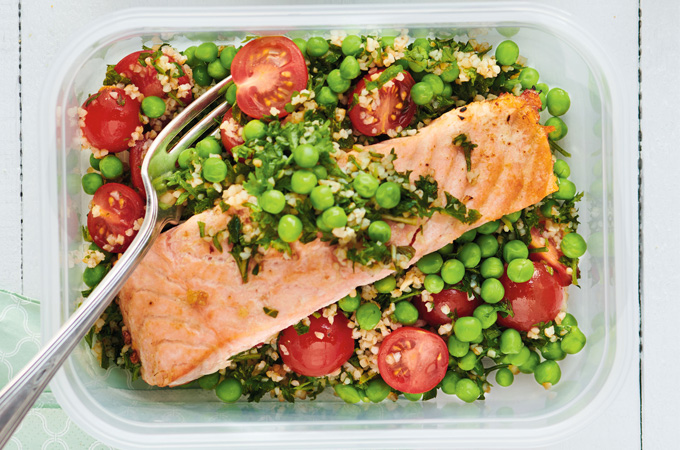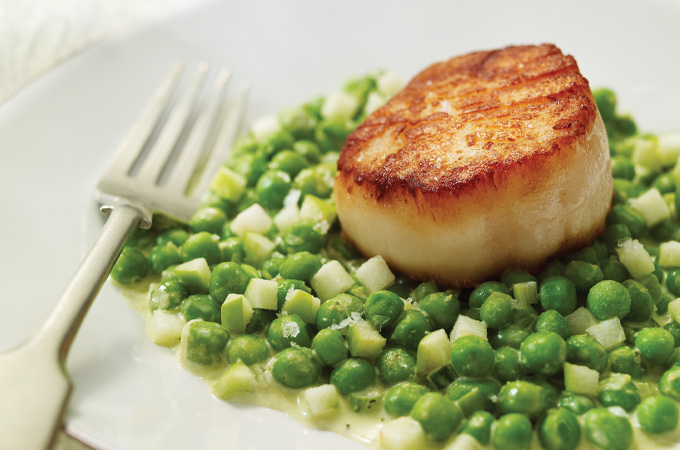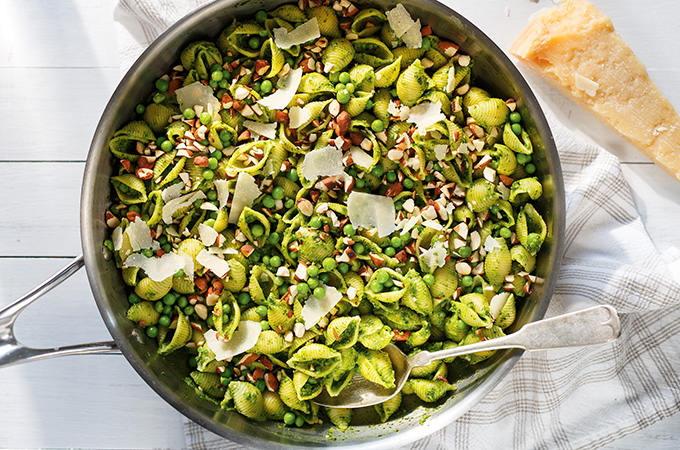1. Pea season
Fresh peas don’t keep well. Just a few hours after they’ve been harvested (between the end of June and mid-August), they have a tendency to start fermenting and their natural sugars begin to turn into starch. If, by chance, you happen upon fresh peas from a place other than your home garden, make sure that they have been picked that same day. Keep them in the refrigerator (for up to 24 hours) until you cook them in a risotto.
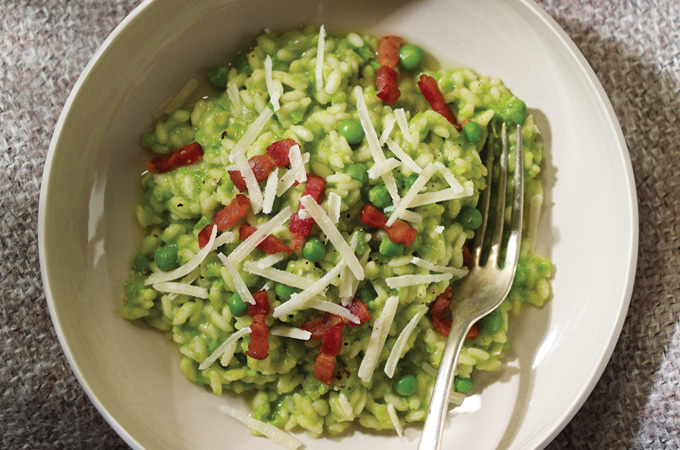
risotto
Pea Risotto
2. Growth
After corn and beans, peas are the third top vegetable crop in the province of Quebec. From the moment the seeds are put into the soil, the field has to look like a living room rug: smooth and uniform. A few days before harvest, the pea’s maturity level is measured with a tenderometer. This machine squishes a number of peas and evaluates their maturity. Nothing is left to chance!
3. Harvest
The combine harvester is the machine that harvests the peas. It does it all: uproots the plants, pulls out the pods, shells them and sends the peas down a rolling carpet, where they’re partially cleaned and forwarded onto a truck. Once the field has been harvested, the truck makes its way to the nearest factory, day or night, no matter the time, to maximize their freshness.
4. At the factory
After going through a conveyor belt, the peas are washed and cleaned numerous times to remove all traces of dirt, branches and pebbles. They are then calibrated, as well as steam-blanched and chilled (frozen almost instantly!). During quality control, they’re checked for taste and colour, as well as for any defects. They’re then bagged and shipped to a grocery store near you, ready to be cooked, such as in a cream of pea soup!
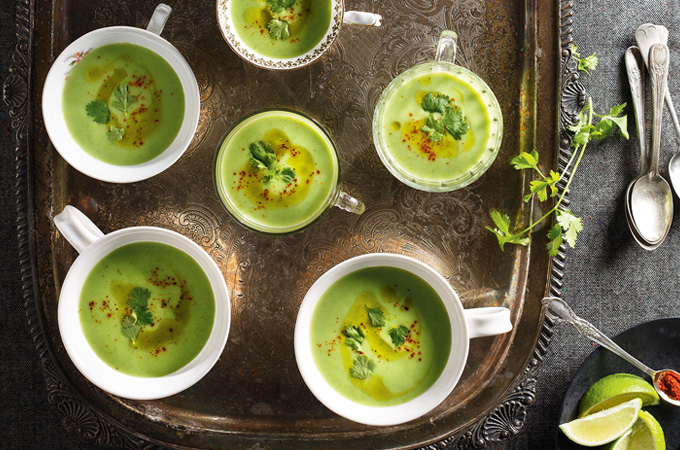
soupes and broths
Cream of Pea Soup with Pesto Oil
There you have it: You now know the path peas take to make their way from the field all the way to your fridge. And now it’s time to cook them in our suggested recipes below.
